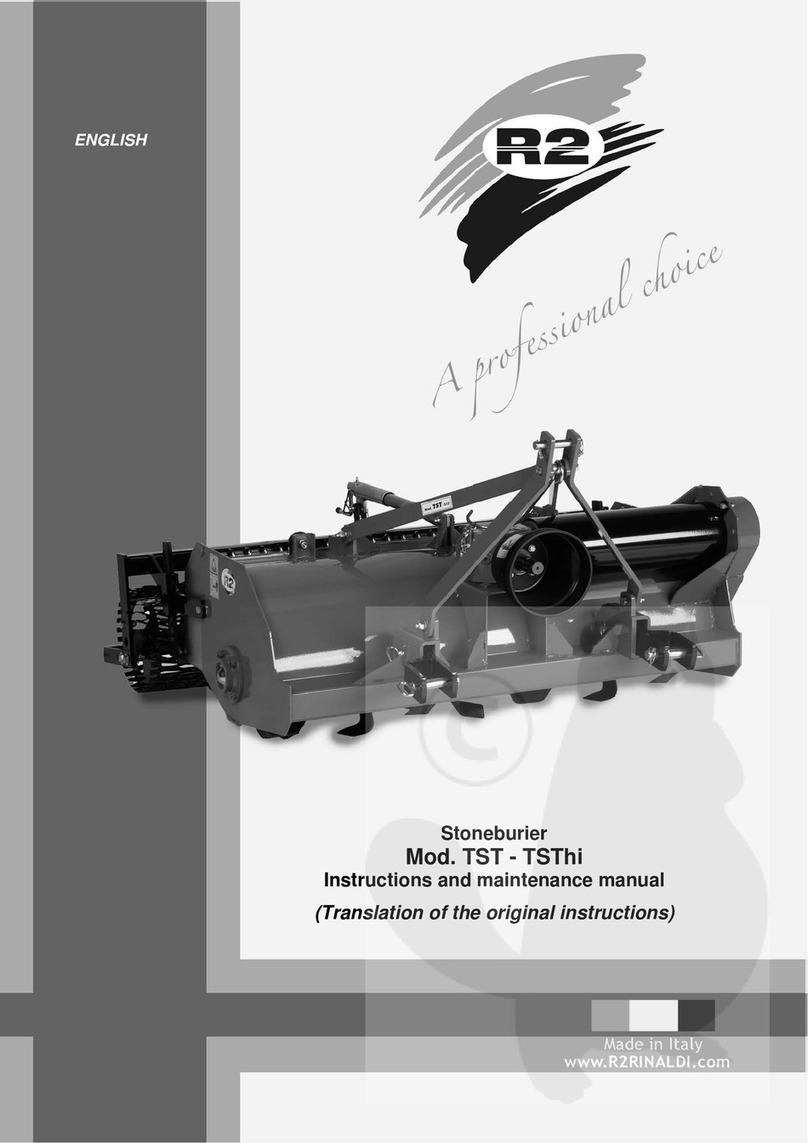3
Italiano
Premessa........................................................ 4
Prevenzione infortuni ......................................... 4
Caratteristiche costruttive.................................. 4
Caratteristiche tecniche..................................... 5
Preparazione all’uso .......................................... 5
Agganciamento al trattore ................................. 5
Albero cardanico ..............................................6
Regolazione della profondità di lavoro................... 6
Livellazione....................................................... 6
Manutenzione .................................................. 6
Sostituzione delle zappe ..................................... 7
Fine lavoro.......................................................7
Garanzia.......................................................... 7
English
Introduction ..................................................... 8
Prevention of accidents .....................................8
Construction features........................................ 8
Technical specications...................................... 9
Preparation before use...................................... 9
Coupling to the tractor ...................................... 9
Cardan shaft.................................................. 10
Adjusting the working depth .............................10
Levelling ........................................................ 10
Maintenance.................................................. 10
Replacement of hoes....................................... 11
After use....................................................... 11
Guarantee ..................................................... 11
Français
Introduction ................................................... 12
Prévention des accidents de travail.................... 12
Caractéristiques de la construction ...................12
Caractéristiques techniques ............................. 13
Préparation à l’emploi...................................... 13
Attelage au tracteur........................................ 13
Arbre à cardan .............................................. 14
Réglage de la profondeur de travail ................... 14
Nivellement.................................................... 14
Entretien ....................................................... 14
Replacement des houes................................... 15
Fin du travail .................................................. 15
Garantie ........................................................ 15
Deutsch
Vorwort ........................................................ 16
Unfallverhütung .............................................. 16
Konstruktionsmerkmale ................................... 16
Technische Eigenschaften ................................ 17
Gebrauchsvorbereitung.................................... 17
Anbau an den Motorkultivator........................... 17
Kardanwelle ................................................... 18
Einstellung der Arbeitstiefe............................... 18
Planierung ..................................................... 18
Wartung ....................................................... 18
Zinkenaustausch............................................. 19
Arbeitsende ................................................... 19
Garantie ........................................................ 19
Español
Introducción................................................... 20
Prevención de accidentes................................. 20
Características de construcción........................ 20
Características técnicas .................................. 21
Preparación para el uso................................... 21
Conexión al tractor ......................................... 21
Eje cardán .....................................................22
Regulación de la profundidad de trabajo ............. 22
Nivelación...................................................... 22
Mantenimiento ............................................... 22
Sustitución de las azadas................................. 23
Fin de trabajo................................................. 23
Garantía ........................................................ 23





























